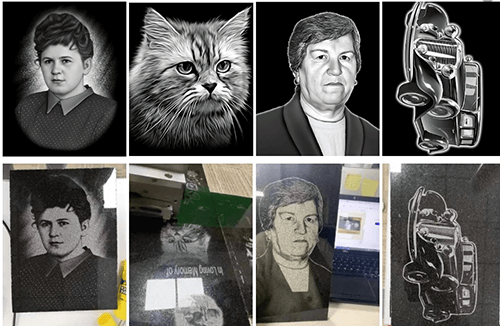Losing a loved one is hard, and many families want a headstone in place fast. Yet the process often takes months. Many people feel frustated when they see how slow it can be. To understand why, we need to look at the work behind each step.
The Process of Engraving
A headstone is not a simple item. It begins with raw granite or marble. These stones must be cut, polished, and prepared for work. Once a family sends the design, engravers use CNC (Computer Numerical Control) machines or hand tools to carve words and images. This step is not quick. Mistakes cannot be fixed easly, so workers move with care.
Shortage of Materials
Many quaries in Europe and other places cannot keep up with demand. Granite is often imported from far away, such as India or China. Shipping takes weeks, and customs rules slow it more. A single delay in transport can hold up the whole project.
Skilled Labor
Engraving is a craft that needs training. Fewer young people enter this trade today. In Germany, for example, there are only about 1,500 trained stone masons left. The shortage of workers means longer wait times for each job.
Example from Europe
Maria, from Italy, ordered a headstone for her father. She chose a black granite stone with a cross and simple text. The shop told her it would take 12 weeks. First, the stone had to arrive from Norway. Then, the engraver needed to finish jobs that were already waiting. By the time the stone was placed in the cemetery, it was six months after the funeral. Maria said, “It felt long, but I understood that good work takes time.”
Custom Design
Families often ask for unique designs. These can include portraits, flowers, or symbols. A CAD (Computer-Aided Design) file must be made for each custom order. This adds more steps before engraving even begins.
Weather and Cemetery Rules
Cold weather can stop workers from installing stones, since cement and sealants do not set in low temps. Cemeteries also have their own rules. Some only allow work on certain days, or require permits. These rules add weeks of waiting.

Facts and Figures
- Average wait for a granite headstone: 3–6 months
- 70% of headstones in the UK use imported granite
- One mistake in engraving can cost over $1,000 in lost stone
Emotional Needs
Families often feel that the delay is unfair. Yet knowing the reasons can help. A headstone is not just a marker. It is a piece of history carved into stone. The time taken ensures it is right, strong, and lasting.
Conclusion
The long wait for a headstone is the result of material supply, skilled labor, design work, and outside rules. Though it may cause pain at first, the final stone stands as a lasting gift. For many families, like Maria’s in Italy, the wait is worth the peace it brings.

